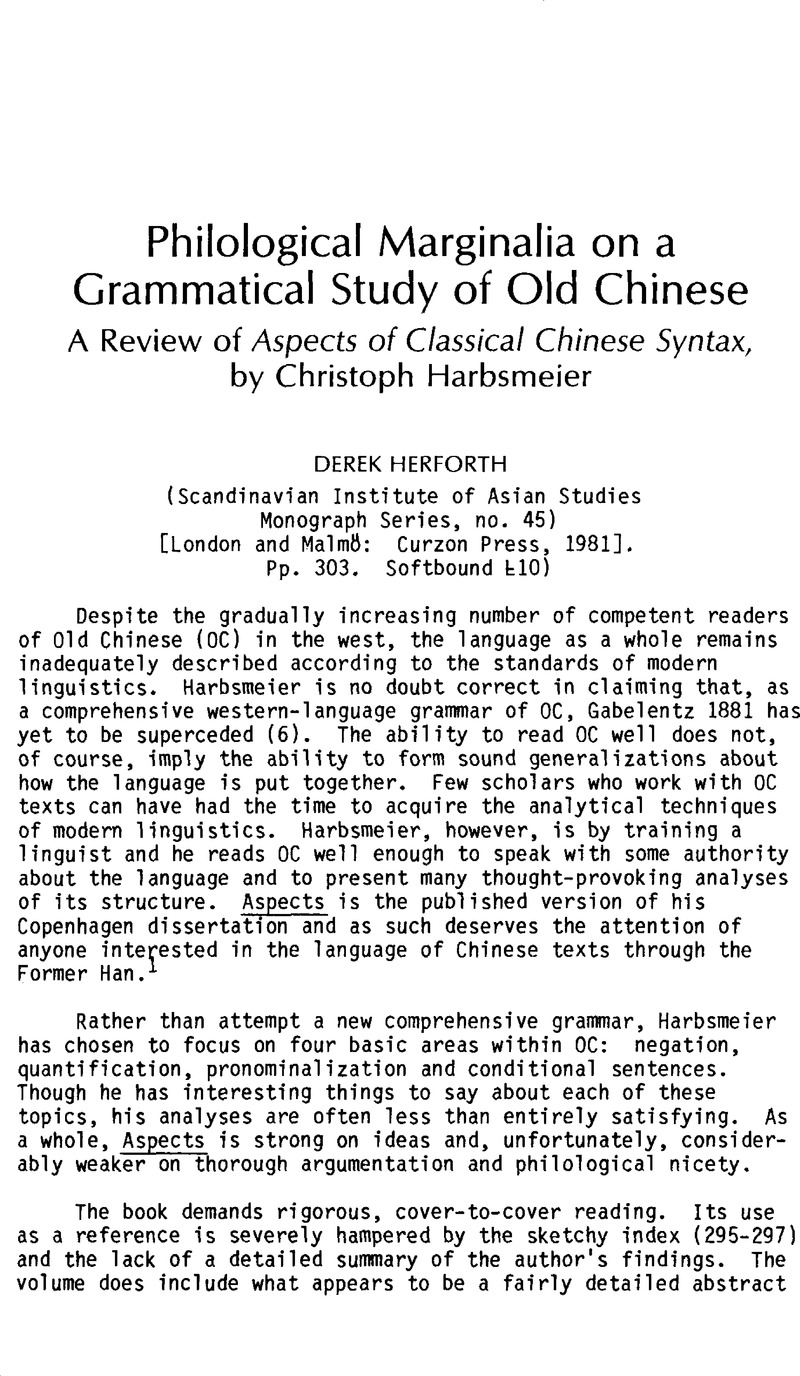Fagao, Zhou
.
1961.
Zhongguo gudai yufa, zaoju

(Ancient Chinese grammar, sentence structure), vol.
1.
Zhongyang yanjiuyuan lishi yuyan yanjiuso zhuankan 
(Monographs of the Institute of History and Philology, Academia Sinica), no. 39. Reprint, 1972.
Taipei:
Tailian guofeng chubanshe 
.
Google Scholar 